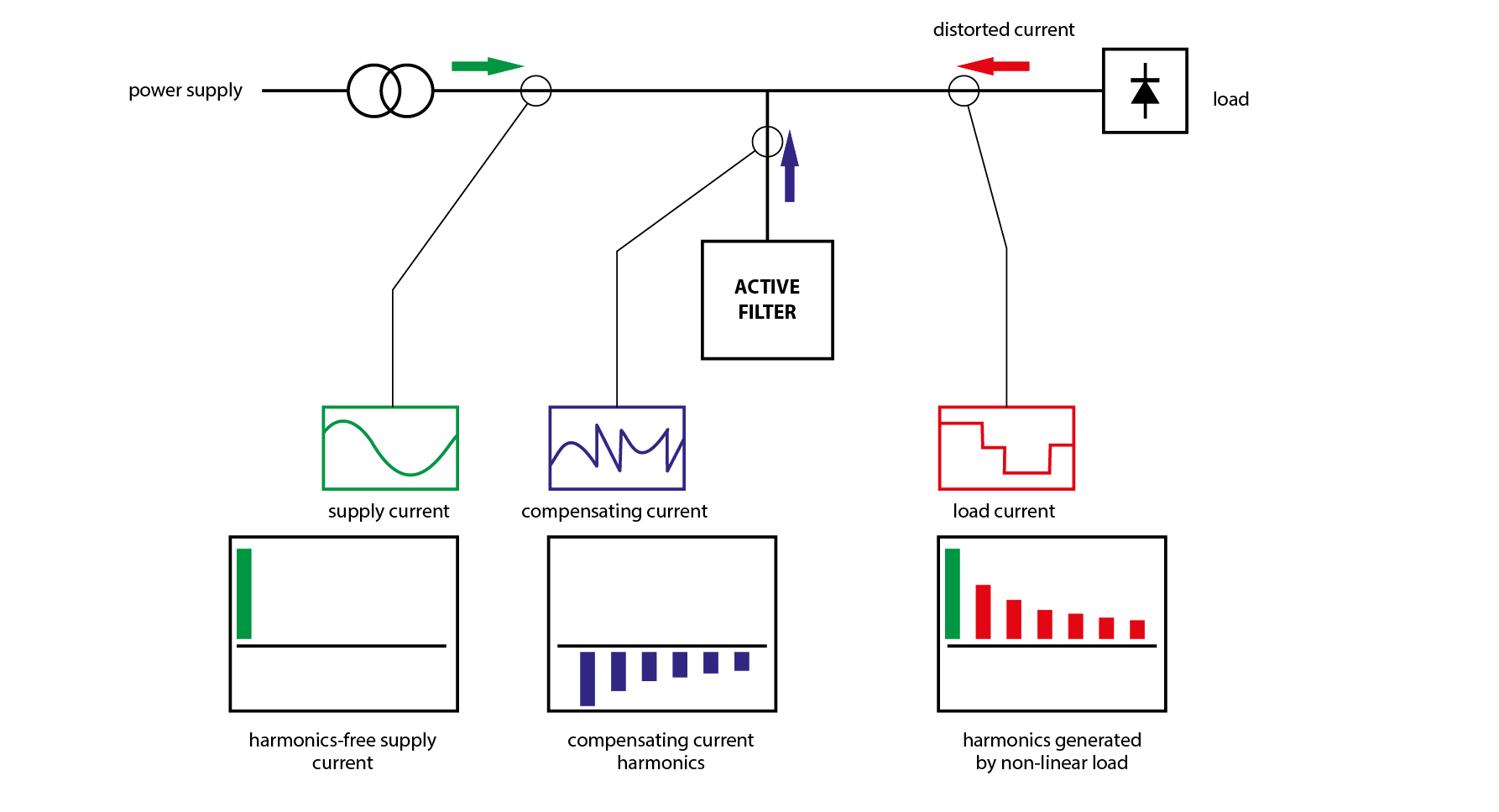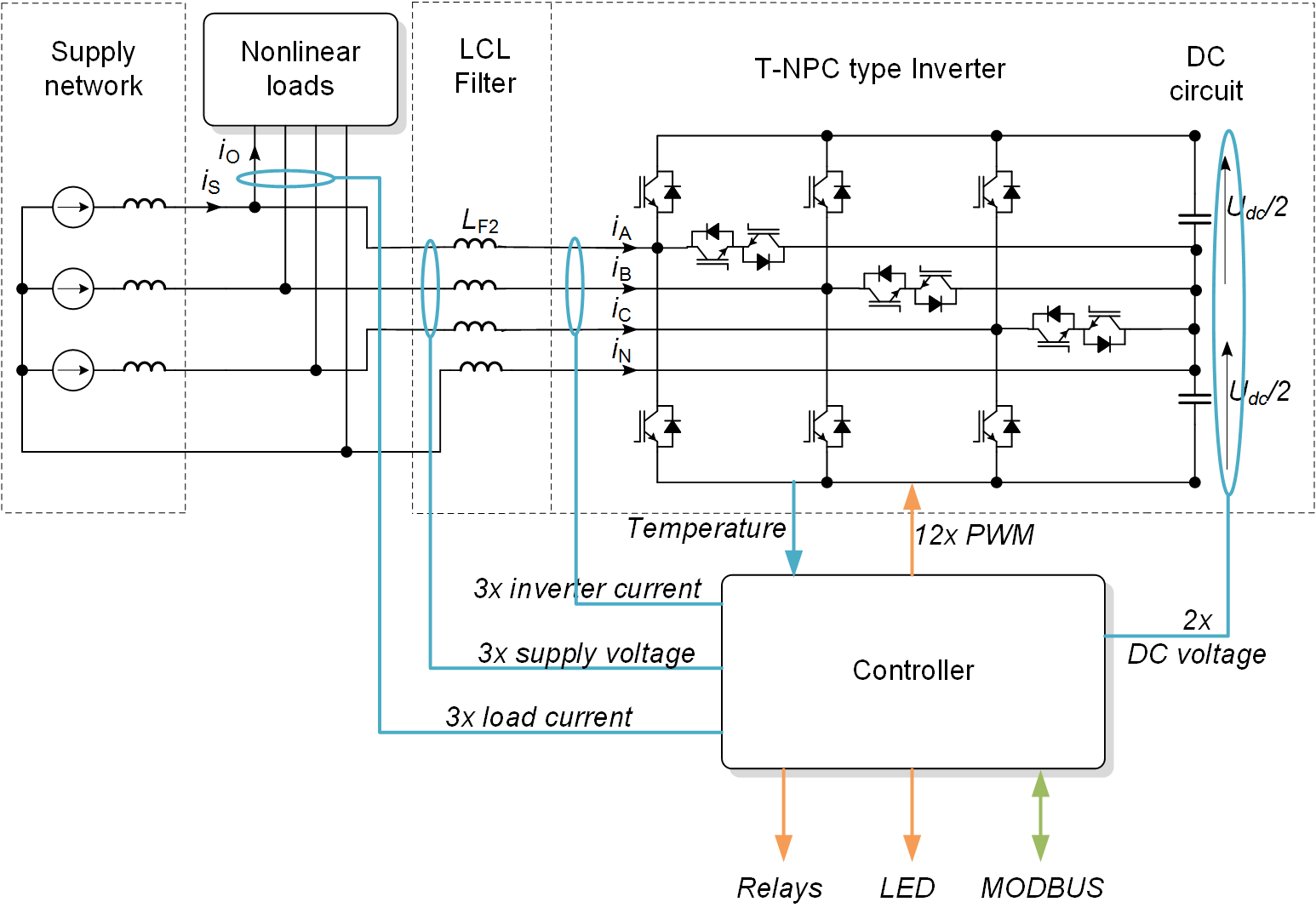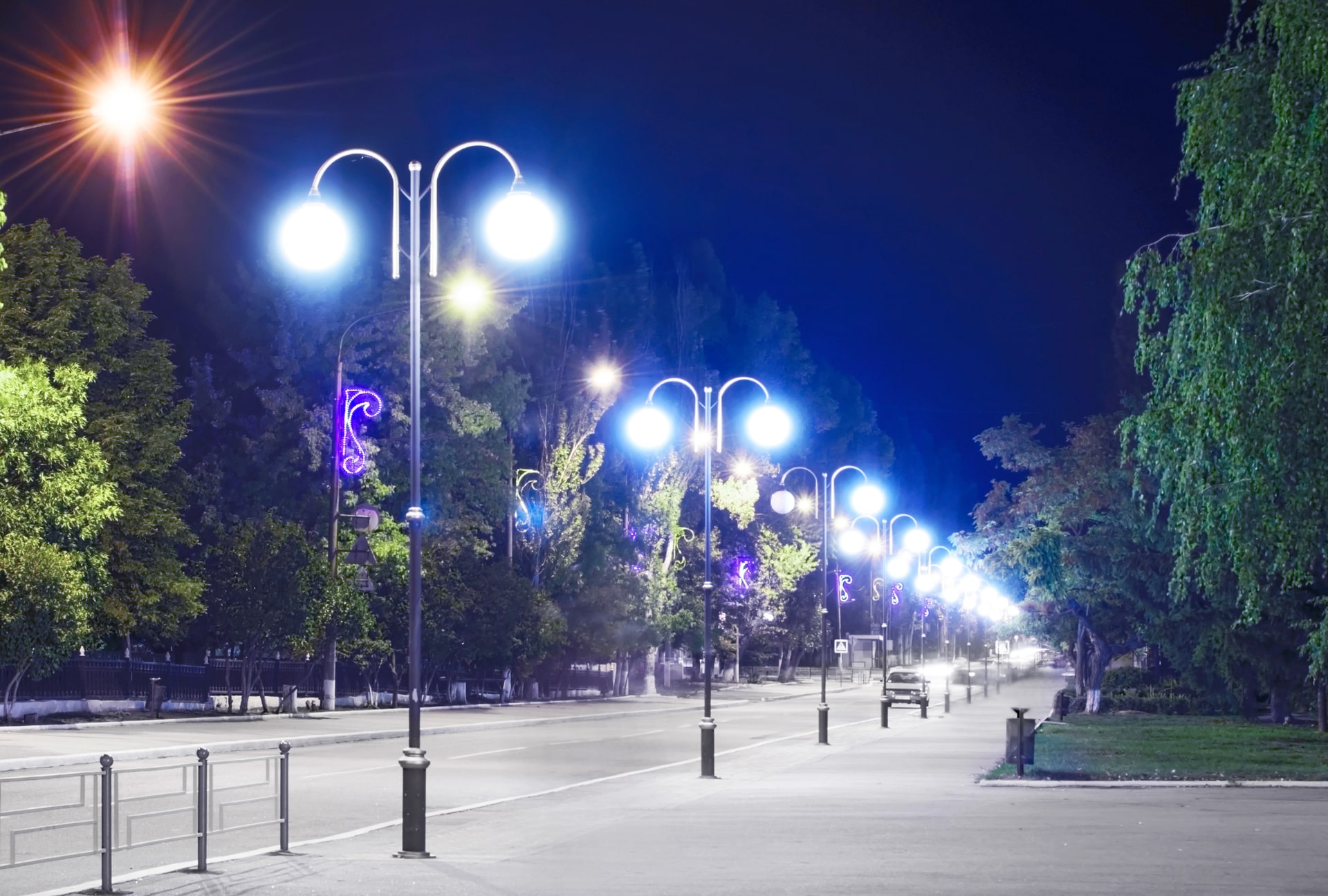Problems with energy quality are one of the main causes of increasingly higher electricity bills and the cause of failures due to power outages.Poor energy quality causes malfunctions and premature wear of electrical and electronic equipment.An increasing number of powered devices is responsible for the increase in disturbances in the power network.Technological progress is mainly related to computerization and electronization.Computers, household appliances, recently even lighting – all these devices have electronic power supplies.Power supplies, especially impulse power supplies, by their nature of operation consume a lot of capacitive reactive energy, on average between 20% and 40% of the active energy and generate interference in the current drawn, even up to THD of 60%.Particularly in lighting, the increasing use of LED luminaries creates new challenges for power supply networks, control devices and apparatus to protect cabinets and lighting control panels.Current harmonic distortions, flickering of the supply voltage due to transient surge currents, low power factor, unbalanced load have a negative impact on the lifetime and reliability of powered equipment and generate losses in power systems.
The basic standard PN-EN 50160 is the basis for current legal regulations specifying the parameters that should be met by electricity supplied to consumers.There are also connection regulations (25.09.2000), tariff regulations (14.12.2000) of the Minister of Economy and the Act of 10 April 1997 – Energy Law.Adding the PN-IEC 60038 standard – all these legal acts form a set of documents regulating the issues related to the quality of electricity in Poland.
Improving energy efficiency of energy consumers
There is no production of Active Harmonic Filters of low power below 20A on Polish and European market.The product is an innovation on a national scale and is designed for reactive power compensation and current harmonics reduction in order to improve energy efficiency of energy consumers, reduce energy transmission losses and reduce CO2 emissions.Improving energy efficiency in the area of street lighting and office lighting ending with a single consumer replacing high-powered sodium and mercury vapor lamps with LED sources is associated with deterioration of power grid parameters.On the one hand, seeing the progress in the area of lighting, Rabbit company has also recognized the dangers of mass application of LED sources commonly used on a mass scale.Electricity operators charge additional fees to consumers related to the generation of inductive and also capacitive reactive power.For many recipients, the associated costs can be severe to the budget of many local government entities not to mention small businesses.Currently, such solutions are available in the case of high power filters, which are more and more often used by large customers, because such solutions are very expensive and only large companies with the capital to apply such solutions can afford them.
The solution fits perfectly into the gap in the Polish market and the AFH Small Power product will reduce transmission losses and reactive energy charges.The product is available to a wide range of small electricity consumers.
The solution will be of interest primarily to electricity consumers from the level of a single kilowatt, such as public administration, health care (hospital facilities and clinics), schools, property managers (offices for rent), municipal offices, public lighting installations in cities and municipalities and all other facilities using electronic devices (LED lighting, computers, etc.).
The unit is easy to install due to its modular and lightweight housing design.The software provides full automation and remote supervision.The filter is a technological innovation, as previously mentioned, not only on a national scale, but also on a European scale.

Parallel Active Low Power Harmonic Filter allows filtering of higher harmonic currents up to 50th harmonic and stepless reactive power compensation (inductive and capacitive) in three-phase networks.The filter can operate in three modes:
- reactive power compensation (improvement of cos ϕ)
- preference for improving cos φ in relation to the reduction of harmonics
- reduction of harmonics
DSP signal processor technology
The Active Low Power Harmonic Filter currently comes in two versions, 10A and 20A.In the case of group operation for higher powers on the objects, we can connect in parallel up to 4 devices, which allows a maximum compensation of 56 kVAr.The distorted load current is analyzed by the DSP (digital signal processor).On the basis of real-time analysis, a distortion current (blue) is generated in the phase opposite to the load current.By summing the load current and the distortion current, we obtain a distortion-free power supply current.

The Active Harmonic Filter is an economically attractive solution for reactive power from 1 kVAr per phase.The filter provides dynamic reactive power compensation and harmonics filtration.
Due to the high speed of operation and very short reaction time, the filter will also be used for fast-changing loads, such as welding equipment and electric motors of lifts and hoists.All parameters and operating modes can be easily configured from any PC thanks to ModBus RTU (RS485), ModBus TCP/IP (Ethernet) communication.The device has protection against temperature rise and overload.There is an emergency stop switch on the front panel that cuts the filter completely off from the mains supply.The filter achieved an energy efficiency of 97.5%.This was done by using a 3-position IGBT module topology.
Such a solution additionally allows to:
- reduce emitted noise
- extend the life of capacitors by reducing current surges
- reduce the heat sink, and thus the weight and dimensions of the device.

Use of Active Harmonic Filter
AFH eliminates power quality problems generated by harmonic distortion, which causes electronic equipment malfunctions, contactor and protection failures, current rise in the neutral conductor up to 1.7 phase current, power losses in transformers and transmission lines.On the other hand, too low a PF (high reactive power) carries high electricity bills and problems and failures in distribution substations.As you can see, the above problems that occur in everyday life related to energy quality can be eliminated.
The above solution guarantees full reactive power compensation and thus zero reactive power charges.Extending the life and reducing the failure rate of powered equipment, saving energy and most importantly it is a quick return on investment.


